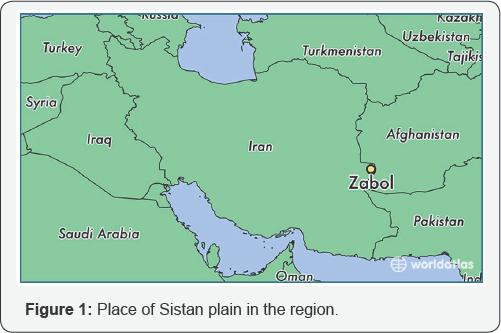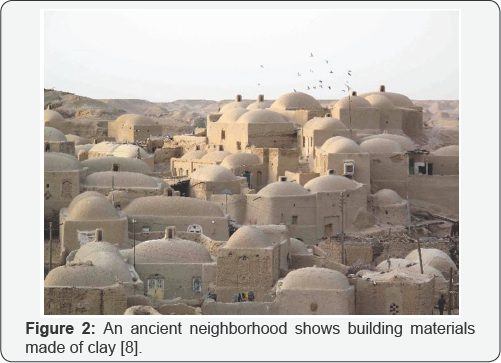Introducing the Ancient Heritage of Sistan When it Goes Down the Sand
Abdul Aziz Shahraki*
Department of Regional Studies, The Royal Institute of Technology, Sweden, Europe
Submission: October 27, 2017; Published: March 20, 2018
*Corresponding author: Abdul Aziz Shahraki, Department of Regional Studies, The Royal Institute of Technology, Sweden, Europe, Email: sharaki@kth.se
How to cite this article: Abdul Aziz Shahraki. Introducing the Ancient Heritage of Sistan When it Goes Down the Sand. Glob J Arch & Anthropol. 2018; 3(1): 555604; DOI10.19080/GJAA.2018.03.555604
Introduction
This brief introduction concerning the ancient heritage of Sistan is extracted from researches that the author has done. The aim of this piece is to state that an old ancient civilization is going under sand dunes!
Where is Sistan?
The entire region of Sistan is located in Iran, Afghanistan and Pakistan. The city of Zabol is the largest city of the region located in Iran. Sistan plain is the continuation of Helmand river basin mainly in Afghanistan. Figure 1 shows the place of Zabol, as the largest city of Sistan region.

Introducing Sistan’s Ancient Architecture
In the Sistan plain, ancient architects used local building materials such as clay, sands, stones, plaster of lime and ashes, and various woods to build their homes and towns. Mede was an early centralized government in Iran. The Medes came to Iran in the ninth century BC. Mede architecture was climatic and popular. Their architecture had two distinct types namely; Rocky architecture in the mountainous regions and large cities in the wide plains, such as the Sistan plain [1]. Medes architects built surprisingly solid houses, bridges, and castles. Basically, they built for normal people unlike to Achaemenes and Sassanian. Medes promoted public spaces. Their architectural works were in the form of large buildings on platforms all over Sistan plain. They built many temples and fire temples that still are visible. Medes used indigenous materials and semi-oval arch techniques. They also enjoyed the halls and porches. Since they used simple building materials such as dried mud, clay blocks, and wood, their wonderful buildings have been demolished by passing times [2]. The picture below shows the building material used by Medes architects in Sistan plain (Figure 2).

In the Sistan plain, you still see Medes building heritages. Moradgholi describes the importance of heritages: "Sistan is a rich collection of historic buildings and archeological sites in the desert. Through this civilization the missing link between the civilizations of East and West was found" [3]. Architecture in Sistan used wide and tall walls with light colors in response to the hot weather. They designed their homes with cupola roofs and small openings. Their building materials included sun-dried brick and cooked bricks. They tried to absorb temperature fluctuations. The ancient architects arranged windows to direct the airflow into rooms and to ventilate the air constantly. Turner commented that the ventilators moved the air to keep the inhabitant cool [4]. Other common techniques in the region to combat the heat were courtyards, patios, and verandas. Oktay reported more techniques, i.e. high walls and outer spaces.Ancient architects provided shade and a relaxing environment for the users during social gatherings, evening entertainment, food preparation, and domestic works such as laundry [5]. A significant characteristic of the ancient building was its functionality. The people built their homes to satisfy their active life necessities and their culture and traditions. The homes were affected by producing, distributing, and consuming activities [6].
Sistan Civilization under Fatal Crises
Unfortunately, the crisis of regional conflicts, the lack of water, drought, etc. destroy the ancient vibrant civilization of Sistan and its valuable heritages.
References
- Cameron GG (1936) History of early Iran.
- Zarei E (1998) Introduction to the history of world's architecture. Published in Persian by Tehran University Press, Iran.
- Moradgholi A (2012) An analysis of the urban context of ancient cities and places in Sistan area. Interdisciplinary journal of contemporary research in business 4: 2.
- Turner L (2003) Climate and Architecture. Florida State University, USA.
- Oktay D (2002) Design with the climate in housing environments: an analysis in Northern Cyprus. Journal of Building and Environment 37(10): 1003-1012.
- Zargar A (2011) An introduction to the Iranian rural architecture. Beheshti University Press, Tehran, Iran.
- Behmanesh A (1885) World History. Tehran University Press Farsi version V.1.
- Iran office of ancient monument preservation.






























